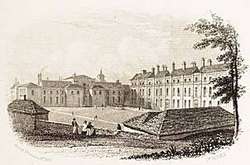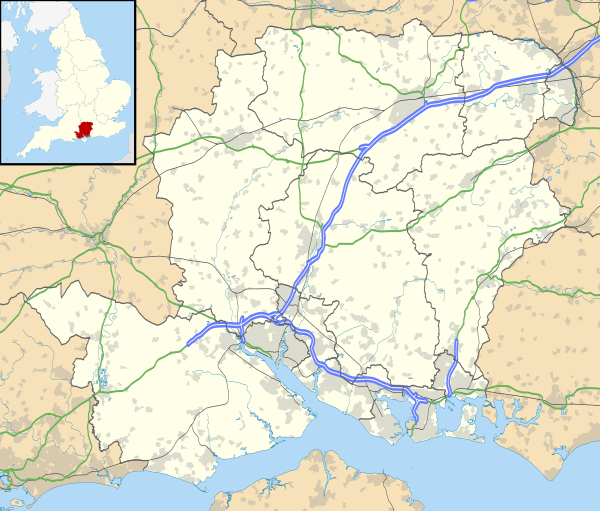Colewort Barracks
Colewort Barracks was a military installation at Portsmouth, Hampshire. It was also known as St Mary's Barracks.[1]
| Colewort Barracks | |
|---|---|
| Portsmouth | |
 Colewort Barracks | |
 Colewort Barracks Location within Hampshire | |
| Coordinates | 50.79375°N 1.10345°W |
| Type | Barracks |
| Site history | |
| Built | 1694 |
| Built for | War Office |
| In use | 1694-late 1920s |
History
The facility were originally built as a garrison hospital in 1680 and converted into a barracks in 1694.[2] The barracks were named after a type of wild cabbage which was prevalent in the local area.[3] The barracks were home to the Army Service Corps, responsible for supplies, transport and accommodation, during the First World War.[4] After the war, the barracks fell into disrepair and were demolished to make way for an expansion to Portsmouth Power Station in the late 1920s.[5]
Description
The barracks were described in the Chronicles of Portsmouth (1823) as:
- "...presenting a fine range of buildings, three stories high, having in front a parade-ground of large size, at one extremity of which is a building corresponding in style, formerly used as an armoury. In the front is a bold armorial sculpture of the English arms in alto relievo. Behind is a second space of ground with ranges of stabling; and on the opposite side, the apartments of the officers of the Royal Artillery. […] On the site of the barracks anciently stood a Conventual building dedicated to the Virgin Mary; and the large burial-ground called St. Mary's was the colewort or cabbage garden or close".[1]
The aforementioned 'cabbage garden', which gave the barracks its name, was still in use as a burial-ground in the early 19th century, long after the conventual chapel of St Mary had been demolished.[6]
References
- Slight, Henry & Julian (1828). Chronicles of Portsmouth. London: Lupton Relfe.
- Wallis, Steve (2016). Secret Portsmouth. Amberley. ISBN 978-1445655161.
- "Gunwaharf Gate". History in Portsmouth. Retrieved 23 September 2017.
- Quail, Sarah (2014). Portsmouth in the Great War. Pen and Sword Military. p. 29. ISBN 978-1473847804.
- "Old Portsmouth map leaves residents stumped". The News. 23 August 2016. Retrieved 23 September 2017.
- "The liberty of Portsmouth and Portsea Island: Introduction". British History Online. Victoria County History 1908. Retrieved 6 February 2019.